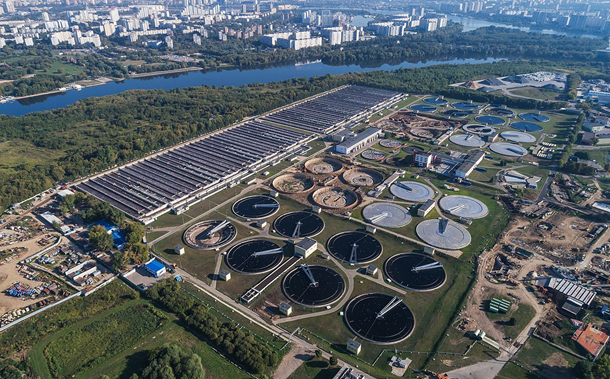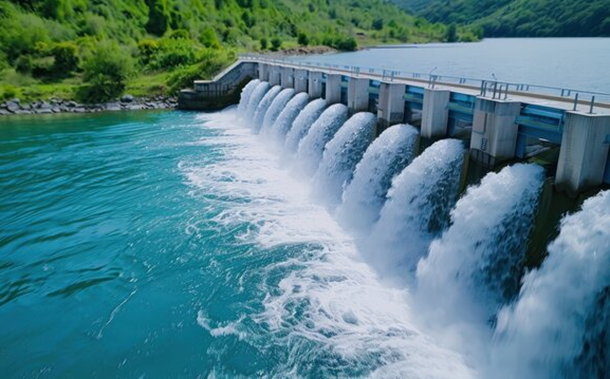Convolutional Neural Network for Predicting Failure Type in Concrete Cylinders During Compression Testing
Downloads
Doi:10.28991/CEJ-2023-09-09-01
Full Text:PDF
Downloads
[2] Ewida, E. S. S., Mabrouk, R. T., El-Shafey, N., & Torkey, A. M. (2022). Flexural behavior of one-way slabs reinforced with welded wire mesh under vertical loads. Civil Engineering Journal, 8(4), 654-671. doi:10.28991/CEJ-2022-08-04-03.
[3] Laxman, K. C., Tabassum, N., Ai, L., Cole, C., & Ziehl, P. (2023). Automated crack detection and crack depth prediction for reinforced concrete structures using deep learning. Construction and Building Materials, 370, 130709. doi:10.1016/j.conbuildmat.2023.130709.
[4] Song, L., Sun, H., Liu, J., Yu, Z., & Cui, C. (2022). Automatic segmentation and quantification of global cracks in concrete structures based on deep learning. Measurement, 199, 111550. doi:10.1016/j.measurement.2022.111550.
[5] Ren, J., Tian, Z., & Bu, J. (2018). Simulating Tensile and Compressive Failure Process of Concrete with a User-defined Bonded-Particle Model. International Journal of Concrete Structures and Materials, 12(1), 56. doi:10.1186/s40069-018-0292-1.
[6] Li, Y., Li, H., & Wang, H. (2018). Pixel-wise crack detection using deep local pattern predictor for robot application. Sensors (Switzerland), 18(9), 3042. doi:10.3390/s18093042.
[7] Hadinata, P. N., Simanta, D., Eddy, L., & Nagai, K. (2021). Crack Detection on Concrete Surfaces Using Deep Encoder-Decoder Convolutional Neural Network: A Comparison Study Between U-Net and DeepLabV3+. Journal of the Civil Engineering Forum, 7(3), 323. doi:10.22146/jcef.65288.
[8] Nguyen, A., Gharehbaghi, V., Le, N. T., Sterling, L., Chaudhry, U. I., & Crawford, S. (2023). ASR crack identification in bridges using deep learning and texture analysis. Structures, 50, 494–507. doi:10.1016/j.istruc.2023.02.042.
[9] Golding, V. P., Gharineiat, Z., Munawar, H. S., & Ullah, F. (2022). Crack Detection in Concrete Structures Using Deep Learning. Sustainability (Switzerland), 14(13), 8117. doi:10.3390/su14138117.
[10] Mendonça, Y. V., Naranjo, P. G. V., & Pinto, D. C. (2022). The Role of Technology in the Learning Process. Emerging Science Journal, 6(Special Issue), 280-295. doi:10.28991/ESJ-2022-SIED-020.
[11] Jayaraju, P., Somasundaram, K., Suprakash, A. S., & Muthusamy, S. (2022). A Deep Learning- Image Based Approach for Detecting Cracks in Buildings. Traitement Du Signal, 39(4), 1429–1434. doi:10.18280/ts.390437.
[12] Kolappan Geetha, G., Yang, H.-J., & Sim, S.-H. (2023). Fast Detection of Missing Thin Propagating Cracks during Deep-Learning-Based Concrete Crack/Non-Crack Classification. Sensors, 23(3), 1419. doi:10.3390/s23031419.
[13] Islam, M. M., Hossain, M. B., Akhtar, M. N., Moni, M. A., & Hasan, K. F. (2022). CNN Based on Transfer Learning Models Using Data Augmentation and Transformation for Detection of Concrete Crack. Algorithms, 15(8). doi:10.3390/a15080287.
[14] Qiao, W., Ma, B., Liu, Q., Wu, X., & Li, G. (2021). Computer Vision-Based Bridge Damage Detection Using Deep Convolutional Networks with Expectation Maximum Attention Module. Sensors, 21(3), 824. doi:10.3390/s21030824.
[15] Koch, C., Georgieva, K., Kasireddy, V., Akinci, B., & Fieguth, P. (2015). A review on computer vision based defect detection and condition assessment of concrete and asphalt civil infrastructure. Advanced Engineering Informatics, 29(2), 196–210. doi:10.1016/j.aei.2015.01.008.
[16] Abdel-Qader, I., Abudayyeh, O., & Kelly, M. E. (2003). Analysis of Edge-Detection Techniques for Crack Identification in Bridges. Journal of Computing in Civil Engineering, 17(4), 255–263. doi:10.1061/(asce)0887-3801(2003)17:4(255).
[17] Haque, I., Alim, M., Alam, M., Nawshin, S., Noori, S. R. H., & Habib, M. T. (2022). Analysis of recognition performance of plant leaf diseases based on machine vision techniques. Journal of Human, Earth, and Future, 3(1), 129-137. doi:10.28991/HEF-2022-03-01-09.
[18] Adhikari, R. S., Moselhi, O., & Bagchi, A. (2014). Image-based retrieval of concrete crack properties for bridge inspection. Automation in Construction, 39, 180–194. doi:10.1016/j.autcon.2013.06.011.
[19] Dinh, T. H., Ha, Q. P., & La, H. M. (2016). Computer vision-based method for concrete crack detection. 2016 14th International Conference on Control, Automation, Robotics and Vision (ICARCV). doi:10.1109/icarcv.2016.7838682.
[20] Lee, J., Kim, H.-S., Kim, N., Ryu, E.-M., & Kang, J.-W. (2019). Learning to Detect Cracks on Damaged Concrete Surfaces Using Two-Branched Convolutional Neural Network. Sensors, 19(21), 4796. doi:10.3390/s19214796.
[21] Ali, L., Alnajjar, F., Jassmi, H. A., Gocho, M., Khan, W., & Serhani, M. A. (2021). Performance Evaluation of Deep CNN-Based Crack Detection and Localization Techniques for Concrete Structures. Sensors, 21(5), 1688. doi:10.3390/s21051688.
[22] Ye, W., Deng, S., Ren, J., Xu, X., Zhang, K., & Du, W. (2022). Deep learning-based fast detection of apparent concrete crack in slab tracks with dilated convolution. Construction and Building Materials, 329, 127157. doi:10.1016/j.conbuildmat.2022.127157.
[23] Li, Y., Bao, T., Xu, B., Shu, X., Zhou, Y., Du, Y., Wang, R., & Zhang, K. (2022). A deep residual neural network framework with transfer learning for concrete dams patch-level crack classification and weakly-supervised localization. Measurement, 188, 110641. doi:10.1016/j.measurement.2021.110641.
[24] Wang, W., & Su, C. (2022). Automatic concrete crack segmentation model based on transformer. Automation in Construction, 139, 104275. doi:10.1016/j.autcon.2022.104275.
[25] Yu, G., Dong, J., Wang, Y., & Zhou, X. (2023). RUC-Net: A Residual-Unet-Based Convolutional Neural Network for Pixel-Level Pavement Crack Segmentation. Sensors, 23(1), 53. doi:10.3390/s23010053.
[26] Chen, L., Chen, W., Wang, L., Zhai, C., Hu, X., Sun, L., Tian, Y., Huang, X., & Jiang, L. (2023). Convolutional neural networks (CNNs)-based multi-category damage detection and recognition of high-speed rail (HSR) reinforced concrete (RC) bridges using test images. Engineering Structures, 276, 115306. doi:10.1016/j.engstruct.2022.115306.
[27] Jiang, Y., Pang, D., & Li, C. (2021). A deep learning approach for fast detection and classification of concrete damage. Automation in Construction, 128, 103785. doi:10.1016/j.autcon.2021.103785.
[28] Falaschetti, L., Beccerica, M., Biagetti, G., Crippa, P., Alessandrini, M., & Turchetti, C. (2022). A Lightweight CNN-Based Vision System for Concrete Crack Detection on a Low-Power Embedded Microcontroller Platform. Procedia Computer Science, 207, 3948–3956. doi:10.1016/j.procs.2022.09.457.
[29] Yeşilmen, S., & Tatar, B. (2022). Efficiency of convolutional neural networks (CNN) based image classification for monitoring construction related activities: A case study on aggregate mining for concrete production. Case Studies in Construction Materials, 17, 1372. doi:10.1016/j.cscm.2022.e01372.
[30] Kulkarni, U., Meena, S. M., Gurlahosur, S. V., & Bhogar, G. (2021). Quantization Friendly MobileNet (QF-MobileNet) Architecture for Vision Based Applications on Embedded Platforms. Neural Networks, 136, 28–39. doi:10.1016/j.neunet.2020.12.022.
[31] Mao, W.-L., Chen, W.-C., Wang, C.-T., & Lin, Y.-H. (2021). Recycling waste classification using optimized convolutional neural network. Resources, Conservation and Recycling, 164, 105132. doi:10.1016/j.resconrec.2020.105132.
[32] Shabbir, A., Ali, N., Ahmed, J., Zafar, B., Rasheed, A., Sajid, M., Ahmed, A., & Dar, S. H. (2021). Satellite and Scene Image Classification Based on Transfer Learning and Fine Tuning of ResNet50. Mathematical Problems in Engineering, 2021, 5843816. doi:10.1155/2021/5843816.
[33] Qu, Z., Mei, J., Liu, L., & Zhou, D. Y. (2020). Crack detection of concrete pavement with cross-entropy loss function and improved VGG16 network model. IEEE Access, 8, 54564–54573. doi:10.1109/ACCESS.2020.2981561.
[34] Yu, Y., Samali, B., Rashidi, M., Mohammadi, M., Nguyen, T. N., & Zhang, G. (2022). Vision-based concrete crack detection using a hybrid framework considering noise effect. Journal of Building Engineering, 61, 105246. doi:10.1016/j.jobe.2022.105246.
[35] Wijaya, I. G. P. S., Dwitama, A. P. J., Widiartha, I. B. K., & Putra, S. A. (2020). Classification of Building Cracks Image Using the Convolutional Neural Network Method. 2020 International Conference on Advancement in Data Science, E-Learning and Information Systems (ICADEIS). doi:10.1109/icadeis49811.2020.9276962.
[36] Shorten, C., & Khoshgoftaar, T. M. (2019). A survey on Image Data Augmentation for Deep Learning. Journal of Big Data, 6(1), 60. doi:10.1186/s40537-019-0197-0.
[37] Howard, A. G., Zhu, M., Chen, B., Kalenichenko, D., Wang, W., Weyand, T., ... & Adam, H. (2017). Mobilenets: Efficient convolutional neural networks for mobile vision applications. arXiv preprint. doi:10.485550/arXiv.1704.04861.
[38] Cao, Q. H., Nguyen, T. T. H., Nguyen, V. T. K., & Nguyen, X. P. (2023). A Novel Explainable Artificial Intelligence Model in Image Classification problem. arXiv preprint. doi:10.48550/arXiv.2307.04137.
[39] Huang, G., Liu, Z., Van Der Maaten, L., & Weinberger, K. Q. (2017). Densely Connected Convolutional Networks. 2017 IEEE Conference on Computer Vision and Pattern Recognition (CVPR). doi:10.1109/cvpr.2017.243.
[40] Qassim, H., Verma, A., & Feinzimer, D. (2018). Compressed residual-VGG16 CNN model for big data places image recognition. 2018 IEEE 8th Annual Computing and Communication Workshop and Conference (CCWC). doi:10.1109/ccwc.2018.8301729.
[41] Wu, P., Liu, A., Fu, J., Ye, X., & Zhao, Y. (2022). Autonomous surface crack identification of concrete structures based on an improved one-stage object detection algorithm. Engineering Structures, 272, 114962. doi:10.1016/j.engstruct.2022.114962.
- Authors retain all copyrights. It is noticeable that authors will not be forced to sign any copyright transfer agreements.
- This work (including HTML and PDF Files) is licensed under a Creative Commons Attribution 4.0 International License.![]()














